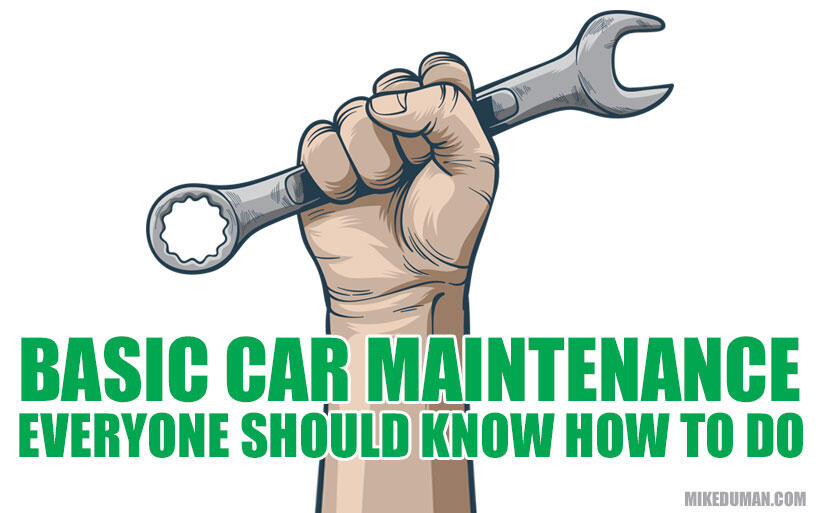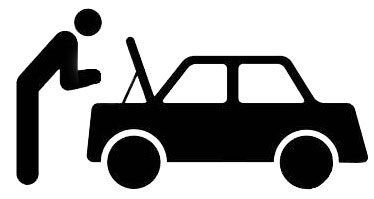
You can significantly expand the lifespan of your vehicle's engine and other crucial systems with basic car maintenance as a preventative measure. You'd be surprised at how easy it is to monitor fluid levels or even replace minor components.
Check these seven fluids
 Your car uses various fluids for lubrication and other purposes, and you should measure their levels and top them off on a monthly basis.
Your car uses various fluids for lubrication and other purposes, and you should measure their levels and top them off on a monthly basis.
Check your engine oil after your motor is warmed up after driving for a while. Open the oil tank and use the dipstick to read the oil level.
Once the engine has cooled off, you should carefully twist the radiator cap open with a rag and peek inside to see how much radiator fluid is left. Additionally, locate the power steering fluid and transmission fluid reservoirs so you can check these fluids next. Pay attention to the consistency of the transmission fluid and replace it if it looks burnt or dirty.
You probably use your car's AC more often in the summer, which means you should keep an eye on refrigerant levels too. While you're under the hood, assess the brake fluid level and color, and check the washer fluid for the windshield wipers.
Are you due for an oil change?
 With hundreds of moving parts, the typical internal combustion engine needs an oil change every 5,000 to 7,000 miles, even though you can wait longer with modern engines that use full synthetic oil. The purpose of the engine oil is to lubricate the moving parts of the engine, but you need to replace it regularly since debris and dirt build up and cause friction.
With hundreds of moving parts, the typical internal combustion engine needs an oil change every 5,000 to 7,000 miles, even though you can wait longer with modern engines that use full synthetic oil. The purpose of the engine oil is to lubricate the moving parts of the engine, but you need to replace it regularly since debris and dirt build up and cause friction.
Don't let your tires become a safety concern
 Rotate your tires every 5,000 to 7,000 miles to help ensure the tire tread wears evenly. In between these periodic rotations, we recommend inspecting your tires monthly to ensure they are properly inflated and evenly worn.
Rotate your tires every 5,000 to 7,000 miles to help ensure the tire tread wears evenly. In between these periodic rotations, we recommend inspecting your tires monthly to ensure they are properly inflated and evenly worn.
You can verify how much tread is left by inserting a quarter inside of a tire groove with the head facing down. If you can't see the top of Washington's head, you still have 4/32" of tread left and can wait before investing in new tires.
If you fail the quarter test, meaning that you can see the top of Washington's head when you insert the coin in a tire groove, you're under the legal minimum of 2/32" and need to upgrade your tires urgently. Consider all-weather grip, a feature that 54% of owners look for when shopping for new tires to improve handling.
DIY car maintenance and repairs
 Thanks to video tutorials, car owners are being more proactive with maintenance and learning to perform minor repairs by themselves. You can also refer to your owner's manual for maintenance instructions that are specific to the make and model of your vehicle.
Thanks to video tutorials, car owners are being more proactive with maintenance and learning to perform minor repairs by themselves. You can also refer to your owner's manual for maintenance instructions that are specific to the make and model of your vehicle.
There are several repairs you can do on your own, such as:
- Changing the air filter every 12,000 miles.
- Replacing worn-out wipers
- Fixing broken headlight bulbs.
- Swapping out old fuses with new ones.
As you gain more experience with car maintenance, you'll be able to take on more advanced repairs like installing new brake pads, changing your battery and replacing faulty spark plugs.
Now that you have a better idea of how to extend the lifespan of your vehicle with some basic car maintenance, you can shop around and compare makes and models. Take a look at Mike Duman Auto Superstore’s inventory to see what’s in stock!
